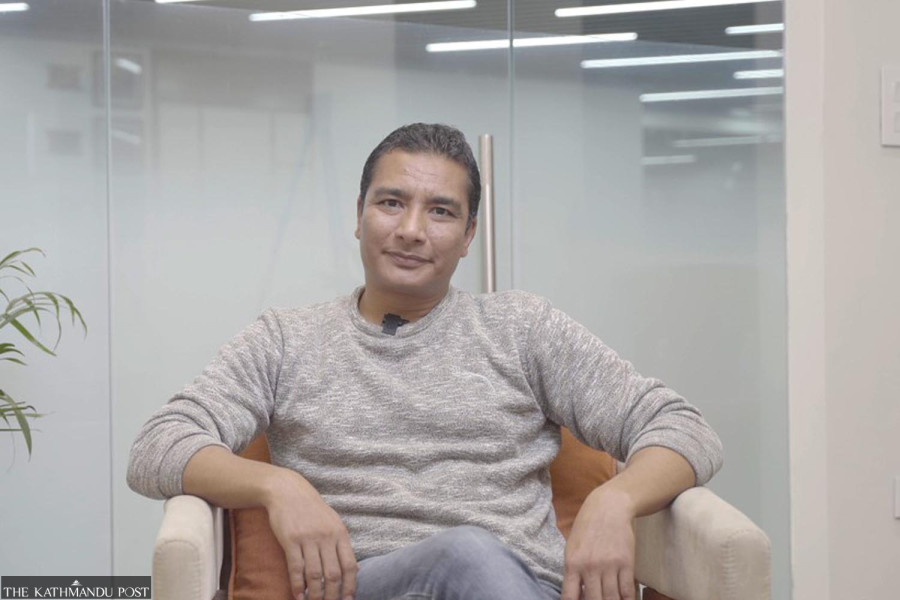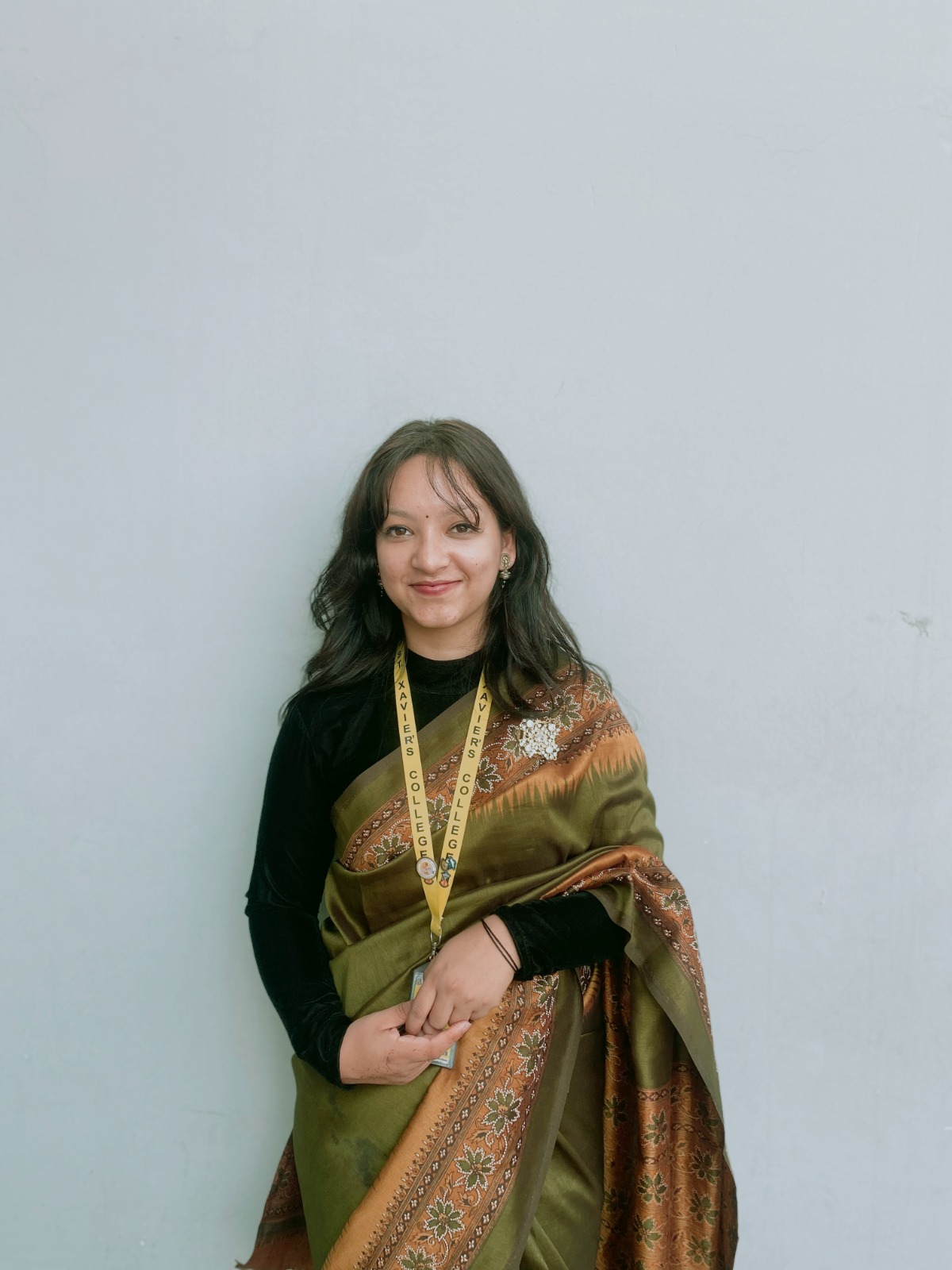Books
Making reading accessible, one story at a time
Children’s author Yashu Shrestha on fostering early literacy, nurturing curiosity, and writing books for disabled children.
Aarya Chand
Author Yashu Shrestha is known for writing children’s books that focus on making reading accessible to young learners. He has written over 200 books, including wordless picture books and decodable texts for early literacy. Some of his popular books include ‘Ramailo Khetbari’ (2018), ‘Pantu Ra Pari’ (2019), and ‘Safa Babu’ (2024).
His stories explore themes of adventure and friendship, resonating with children and giving them life lessons.
In this conversation with the Post’s Aarya Chand, Shrestha shares how his experiences growing up in Nepal’s rural landscapes shaped his love for storytelling.
What inspired you to write children’s books, and how did you start your journey as a writer?
Since my school days, I have aspired to be a writer, not realising that most writers have other jobs to support themselves. I started writing in eighth grade and eventually relocated to Kathmandu after completing my higher secondary education. The city felt like a sprawling jungle—without any support, I even had to sleep in vehicles at times. I reached out to publishing houses but encountered scepticism. Some questioned whether I could survive through writing, leading me to doubt the value of literature itself.
As a child, children’s books were among the first things I read, and I recognised the importance of fostering a reading habit early on, which inspired me to write for young audiences. During that time, ‘Muna’, a monthly magazine for children, and ‘Sunkesara’ were quite popular. I submitted my story titled ‘Bhagwan ko Utpatti’, and it was published in 2004. Seeing my work in print made me happy. When I visited the editor, I was surprised to find a young man instead of an old one as I had imagined. He welcomed me, encouraged me to write more, and handed me my first payment—Rs128.
At the time, a plate of momo cost Rs20, and I realised I could sustain myself if I wrote multiple stories. This moment fueled my passion, and I continued writing to nurture children’s creativity and promote a reading culture. What began as a dream became my profession and lifelong commitment to children’s literature.
You’ve written books like ‘Fun Farm’ and ‘City and Forest’. How does the contrast between rural and urban life influence your storytelling?
The contrast between rural and urban life influences my storytelling. Nepal’s diversity, its 124 languages and varying levels of education create vastly different learning experiences for children. In some villages, schools are at constant risk of being swept away by floods, while city children have access to well-equipped classrooms. I’ve seen firsthand how urban students can read 60 pages at a time, whereas rural students struggle with just six. Having been born in the mountains, raised in the Tarai, and working in Kathmandu, I’ve gained insight into these differences.
To reflect these realities, I immerse myself in different communities before writing. For instance, I spent 15 days in Jumla to understand how students learn before working on ‘Mero Gauko Katha’. I also engage with students, ensuring they understand my stories and incorporating their feedback.
Beyond storytelling, I have also worked on wordless picture books, recognising that children aren’t born knowing the alphabet but understand family and familiar figures. By using illustrations to replace words, I made stories more accessible. I later worked on decodable books and designed smaller-sized books to encourage young readers.
My approach to children’s literature follows a developmental path, from storytelling during pregnancy to wordless books, decodable texts, pictorial books, pre-chapter books, and finally, novels. This method has helped me create over 200 children’s books, making reading an engaging and gradual journey for young minds.
‘So Many Questions’ suggests an exploration of curiosity. What inspired you to write this book?
Children should always be encouraged to ask questions, as there is no right or wrong type of curiosity. Until the age of nine, the right brain, which is responsible for creativity, is more active, while logical thinking develops later. This is why young children are naturally inquisitive, and their questions should be welcomed rather than discouraged. Answering them fosters honesty and sharp thinking.
However, as children grow older, it’s also important to teach them how to seek answers independently rather than providing instant solutions. This helps develop critical thinking skills. ‘So Many Questions’ (2016) was inspired by my own curiosity, and through this book, I aim to encourage children to keep questioning while also learning how to explore and find answers on their own.
Your books often explore diverse experiences and challenges faced by children. How do you approach writing stories that address psychological and social issues, and why do you think such themes are important in children’s literature?
Understanding children’s psychology is essential when writing for them. While I haven’t specifically written for children with autism or such mental health issues, I have created stories for children with disabilities, including sound books, which are available in the Global Digital Library. Addressing social issues through literature is something I actively engage in—for instance, ‘Mero Rato’ (My Red) was written to help normalise conversations about menstruation, and it was also recognised on the IBBY Honour List 2022 (the International Board on Books for Young People is an international recognition given to children’s books).
I also explore behavioural psychology in books like ‘Ulto Jutta’, which was adapted into the short film ‘Junuko Jutta’ by director Kedar Shrestha. It follows a child who insists on wearing shoes upside-down, illustrating how small behavioural traits can become significant over time. Similarly, I created the character ‘Gothey’, who, despite being older, has the mindset of a younger child and struggles to fully understand his peers. Through such stories, I aim to create space for diverse characters and experiences, ensuring that children who face different challenges feel represented and understood. I strongly believe that all topics, especially those related to mental and social well-being, should be addressed in children’s literature.
How has your collaboration with illustrators evolved, and what balance do you strike between guidance and creative freedom?
Initially, I would submit my stories without any involvement in the illustration process, only seeing the final artwork after publication. However, I realised the need for closer collaboration, so I began working directly with illustrators—discussing ideas and ensuring the visuals aligned with the story.
Over time, as schedules tightened, we shifted to a more structured process. Now, we finalise the story with the publisher first, then select an illustrator suited to the project. We meet with them, request multiple character designs, and provide guidance when needed. Some illustrators prefer clear directions, while others thrive with creative freedom, so we adapt accordingly. For example, one illustrator wanted to set a story in an urban environment to experiment with imagery, and we fully embraced that idea. Our approach balances structure and flexibility, allowing illustrators to bring their artistic vision to the story.
How do you balance storytelling and moral lessons in children’s books?
Instead of directly teaching lessons, I believe in writing engaging stories so children naturally absorb the message. Earlier, books explicitly stated facts, such as washing hands is essential to prevent diarrhoea caused by houseflies. However, we introduced a more creative approach by turning houseflies into characters or using fruit characters to make learning enjoyable. While a good story should have a message, the focus should be on storytelling. If the story is entertaining, the message will come through on its own.
Yashu Shrestha’s five book recommendations
Mero Kathako Alien
Author: Anuradha
Publisher: Kathmandu Publication
Year: 2017
The narrative centres on a naive alien confronted by other aliens. Throughout these challenges, Anuradha weaves in several scientific ideas.
Ma Ra Buddha Part 1
Author: Saurabh Kiran Shrestha
Publisher: Kathalaya Inc
Year: 2017
The author uses simple language to educate children about Buddha’s story—covering his birth, struggles, wisdom, and family life.
Island of the Blue Dolphins
Author: Scott O’Dell
Publisher: Houghton Mifflin
Year: 1960
A brother and sister get separated, leaving the girl alone in a jungle. The book explores her struggles and survival.
Totto-Chan: The Little Girl at the Window
Author: Tetsuko Kuroyanagi
Publisher: Kodansha Publishers Ltd
Year: 1981
Kuroyanagi shares his experience of receiving unconventional education during the Second World War at a Tokyo elementary school.
The Giving Tree
Author: Shel Silverstein
Publisher: Harper & Row
Year: 1964
This story has been widely translated. It highlights the generosity of a tree, which provides fruit, shade, and support.




 14.29°C Kathmandu
14.29°C Kathmandu















